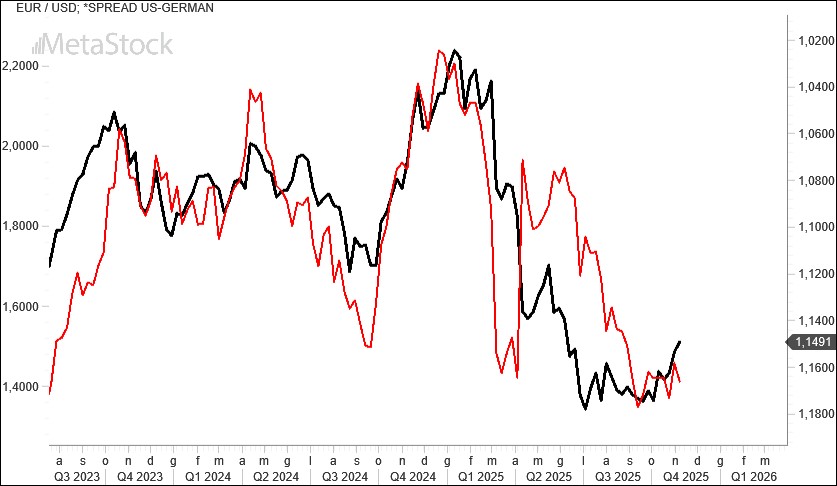- Trump doesn’t hide his frustration after losing the New York mayoral election, blaming the federal shutdown – which has now become the longest in U.S. history. Rising long-term yields, driven by a more hawkish Powell, have temporarily strengthened the dollar.
- Europe, meanwhile, continues to navigate cautiously. The ECB confirmed rates at 2% and appears comfortable with the recent weakness of the euro.
- The EUR/USD pair is correcting from its yearly highs amid a widening rate differential in favor of the United States. The recent support levels remain crucial.
Shutdown: When Will It End?
Donald Trump suffered a setback in the New York mayoral race and didn’t take it well, blaming the federal shutdown for the Democrats’ victory. The loss sends a warning signal for the tycoon ahead of next year’s midterm elections, adding to an already heightened sense of uncertainty.
That uncertainty stems from a lack of macro data, missing insights into how speculators and institutional investors are positioned in futures markets, a pending Supreme Court ruling on tariff legitimacy, and a notably more hawkish Jerome Powell, whose stance has pushed 10-year Treasury yields away from the 4% threshold – supporting the dollar.
A touch of “risk-off” sentiment followed October’s positive monthly close, with investors retreating to the greenback as a safe haven – far more so than Bitcoin, which tumbled over 20% in a month.
Among the few non-federal macro indicators released, the ISM manufacturing index fell more than expected, staying below 50. However, the improvement in the new orders-to-inventories ratio suggests that businesses see brighter prospects heading into early 2026. The ISM prices index also declined further below 60 – a sign that inflationary pressures may be easing.
That could pave the way for a new Fed rate cut on December 10, despite increasingly hawkish rhetoric from some FOMC members.
October’s ADP employment data confirmed a labor market that’s slowing but not yet shedding jobs, while the ISM services index came in stronger than expected.
In Europe, there’s little news apart from growing anticipation surrounding the upcoming UK budget proposal – an event that often sparks volatility in both bonds and the pound.
Technical Analysis: Interest Rates Favor the Dollar
The latest comments from the Fed Chair, noticeably less dovish than in previous weeks, have fueled a renewed widening in the yield spread between U.S. and German 10-year bonds.
This rate differential appears to have found solid support around 140 basis points—coinciding with the dollar’s strong rebound, which has brought EUR/USD back toward the 1.15 level. As we’ll see shortly, this technical support zone plays a key role in shaping the pair’s outlook.

The daily chart highlights the current technical setup for EUR/USD. Since mid-September, the pair has been in reverse gear after hitting resistance around 1.19 with almost surgical precision. For now, this move can be classified as a simple correction—one that will remain so as long as support at 1.14 (the 200-day moving average and July lows) holds.
A break below that level would project the pair toward the 1.126 area, where renewed selling pressure on the dollar would likely reappear. For the moment, however, that scenario seems unlikely.



Leave a Reply
You must be logged in to post a comment.